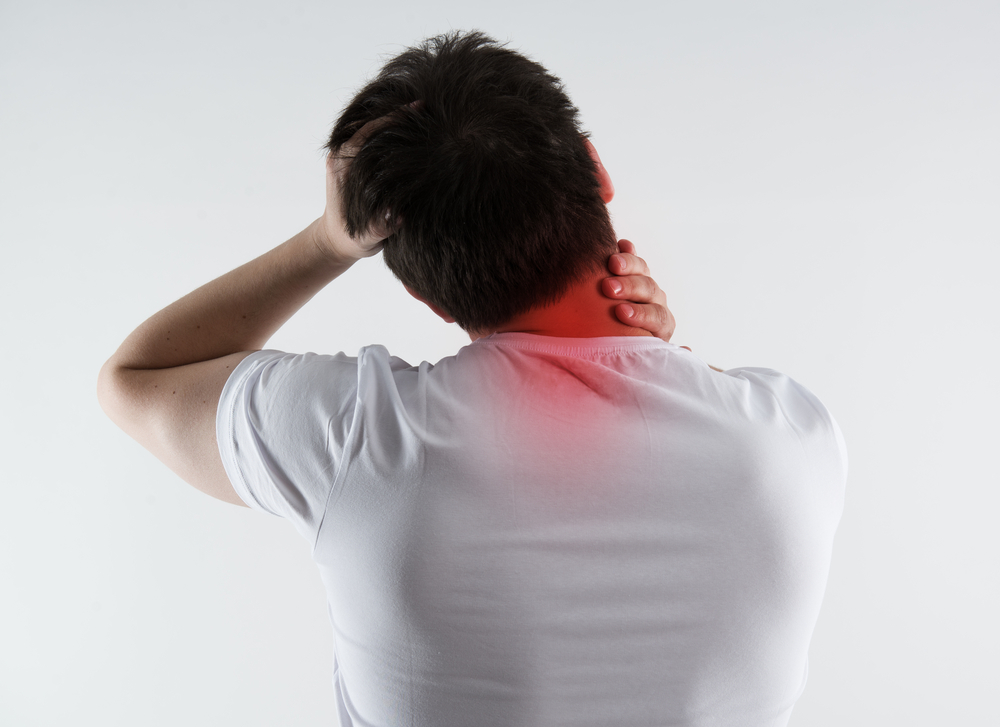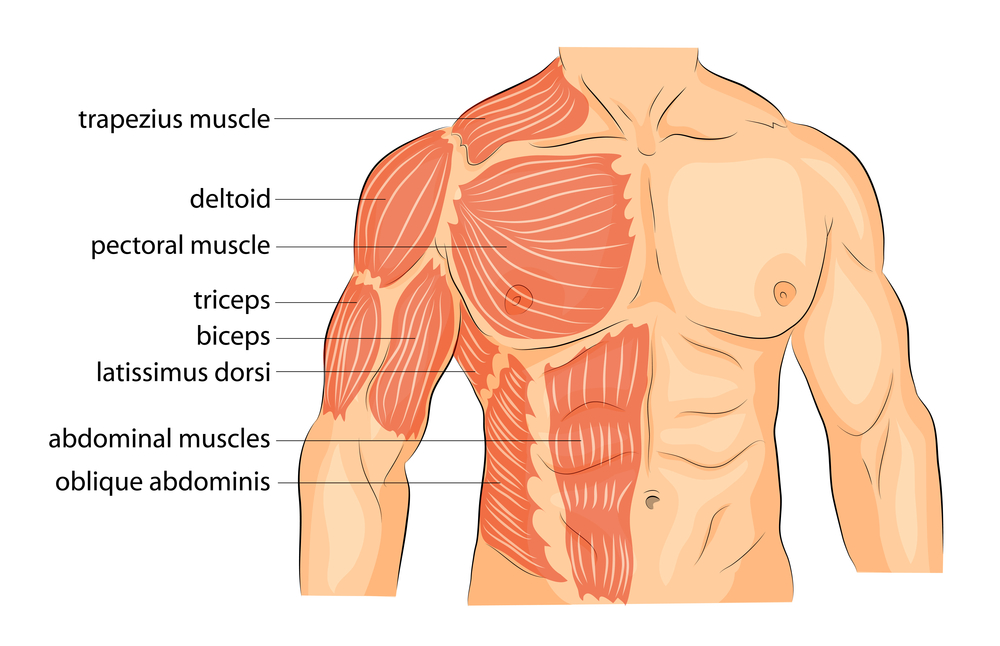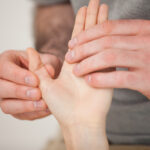
Bowling is generally thought to be associated with a low injury risk. And that’s because it doesn’t require any running, jumping, or sweating from exertion. Still, some have experienced soreness after leaving the bowling alley, prompting them to wonder, “Can bowling make you sore?”
If you’re wondering the same, you’re in the right place. We’ll address just that in this article.
Contents
- 1 Can Bowling Make You Sore
- 2 Does Bowling Make Your Arm Sore?
- 3 Can Bowling Hurt Your Wrist?
- 4 Why Do My Fingers Swell When I Bowl?
- 5 Other Bowling Common Injuries to Look Out For
- 6 Which Muscles Are Used During Bowling?
- 7 How to Prevent Bowling Injuries
- 8 How to Treat Bowling Injuries
- 9 Can Bowling Cause a Hernia?
Can Bowling Make You Sore
Yes, bowling can definitely make you sore. Bowling isn’t strenuous, but it is repetitious. And it can cause your muscles or joints to feel sore the next day.
In fact, there are several ways bowling can lead to soreness, and they include:
- Using a bowling ball that’s too heavy for you. It can cause muscles in your arms and shoulders to become strained.
- Not using proper form when you bowl. Doing so can also lead to muscle strain.
- Repetitive arm and shoulder motions. This can cause inflammation in your tendons and muscles.
- Sitting for long periods of time. If you’re not used to it, sitting for an extended period can lead to soreness in your legs and back. This is common in injured, elderly, or pregnant people.
So, if you find yourself feeling a little sore after your next trip to the bowling alley, don’t be too surprised.
Does Bowling Make Your Arm Sore?
Bowling may not be as physically demanding as other sports, it can still be taxing on your body, especially your arms. Bowling involves repeatedly throwing a heavy ball (between 6 to 16 pounds) down a lane, which can put a strain on the muscles and tendons in your arms. The repetitive motion and different throwing techniques can lead to inflammation in the joints.
If you bowl regularly, you may therefore experience soreness in your arms, particularly in the elbow and shoulder. However, this can be alleviated with some simple stretches or over-the-counter medication. If the pain persists or gets worse, it’s important to see a doctor to rule out any other potential causes.
Can Bowling Hurt Your Wrist?
Bowling can cause wrist pain because repeated motions can occasionally lead to joint pain. That being said, be sure to use a good bowling grip that supports the wrist and prevents it from hyper-extending.

Do Wrist Supports Really Help With Sore Wrists?
Wrist supports are a common sight in gyms and on playgrounds, but do they really help with sore wrists? Wrist supports can help to stabilize the joint and relieve pressure on the tendons, which can be helpful if you are suffering from acute pain or inflammation. They can also be used to help relieve pain from conditions such as carpal tunnel syndrome and tendonitis.
Why Do My Fingers Swell When I Bowl?
When you bowl, you grip the ball tightly in your hand to generate the power needed to throw it down the lane. The continuous gripping and squeezing of the ball can cause your fingers to swell.
When you grip something tightly, it can reduce circulation to your fingers. The pressure from the ball can also cause fluid to build up in your fingers, leading to swelling. In most cases, the swelling will go down on its own within a few hours. However, if you believe the swelling is too severe, seek medical attention.
Other Bowling Common Injuries to Look Out For
Soreness can also be a sign of injury. So, it's worthwhile to learn about common bowling injuries to pinpoint the problem immediately or prevent it from occurring in the first place. Here are some of the most common issues that come up with bowlers time and time again:
- Bowler’s Elbow or Epicondylitis: This is when your tendons are irritated and inflamed at your elbow. You may feel an aching in your forearm that worsens as you grip your bowling ball, pain when you flex with weight, numbness, tingling, and pain in your wrists and forearms. This is typically caused by repetitive movement.
- Shoulder Tendonitis or Tendinopathy: This is a shoulder injury that involves damage to the tendons. The pain associated with this condition may be dull, achy, or sharp. Throwing a heavy ball repeatedly can result in this condition. In extreme cases where a bowler throws the ball too hard, the shoulder tendons can actually tear.
- Trigger Finger Injury: Bowling-related soreness is often situated in the trigger finger. When you strain your fingers by gripping and throwing a ball over and over again, it can cause some alarming injuries. Your finger may get stuck in a bent position, and if you can move it, there may be a pop or click in your digits. You could also experience pain in your hand.
- Bowler’s Thumb: Though uncommon, it is possible to put too much pressure on the ulnar nerve in your thumb, and it can be incredibly painful. Bowler's thumb typically occurs when a bowler uses a bowling ball with an improperly sized thumb hole. But this doesn't have to be the case - bowling on a regular basis is enough to cause this condition.
- Carpal Tunnel Syndrome: Carpal tunnel syndrome happens when the median nerve, which extends from the palm of your hand to your forearm, becomes compressed and painful over time. This soreness might present with swelling, tingling, and redness. This can happen if a player bowls often and doesn't stretch out or rest their wrist.
- Back Soreness: With back soreness, you might experience anything from sharp pain to minor aches when you move. Back soreness often occurs when a bowler uses a poor technique, a bowling ball that’s too heavy, or shoes that don’t provide the right amount of traction. Advanced age and lack of physical activity outside of bowling are also risk factors. All of these issues lead you to rely too heavily on your back muscles.
- Hip Soreness: The average person’s hips go through a lot just with day-to-day activities, so imagine what they go through with bowling. Every movement requires stability from your hips, and any inflammation in that region can make them feel sore.

Which Muscles Are Used During Bowling?
When you bowl, your muscles work together to generate the power needed to throw the ball. To bowl correctly, you need to use your legs, hips, trunk, shoulders, and arms. The main muscle groups used in bowling are:
- the quadriceps (thigh muscles)
- gluteus Maximus (hip and buttock area)
- erector spinae (deep back muscles)
- trapezius (back, shoulder, and neck muscle)
- latissimus dorsi (the remaining back muscle (looks like bat wings)).
Quadriceps are the muscles in the front of your thighs. They extend your leg at the knee and help you to straighten your leg when you throw the ball.
Your leg muscles are responsible for generating the power to push off the approach.
The gluteus maximus is the largest muscle in your body. It is located in your buttocks and helps to extend your hip when you bowl.
Erector spinae is a group of muscles that runs along the spine and helps to keep the back straight.
The trapezius is a large muscle located in the upper back and is responsible for moving the shoulder blades. Your arm muscles are responsible for swinging the ball.
The latissimus dorsi is a large muscle located in your back. It helps to extend your arm when you throw the ball and also plays an important role in stabilizing your body as you swing.
In order to generate the speed and force necessary to bowl a strike, you have to use muscles all over your body. But the most common muscle groups that can feel sore after bowling are the shoulders, arms, and legs.

How to Prevent Bowling Injuries
Any sports injury impacts the player and how they perform, no matter the game they play. The best way to keep yourself from being injured is to follow the below tips.
- Stretch before and after you bowl. If you have time between frames, gentle stretching then is also a good idea.
- Work on your technique. A problematic bowling technique can cause a host of body issues. The issue could be in your backswing, forward swing, or even in your stance. If you’re not sure what you’re doing wrong, consult a friend or bowling expert.
- Make sure you have the right equipment. If your ball isn’t the right weight or your finger holes don’t fit your fingers, it can cause issues. Investing in a ball more suitable for you is vital for injury prevention.
- Strengthen your body. If you have weak muscles, you’re more likely to get hurt. Exercises that work your core, legs, back, and arms will help you in the long run. Consult your doctor before starting a new exercise program.
How to Treat Bowling Injuries
Every bowling injury is different, so it’s important to treat each one accordingly. The first step is always to rest the injured area. If you continue to bowl while injured, you’re only going to make the condition worse. After you’ve rested, try some of the following treatments.
- Ice: Applying ice to the injured area can help reduce inflammation and pain.
- Heat: For injuries that feel stiff, heat might be a better option. Use a heating pad on a low setting or take a warm bath.
- Over-the-counter medication: If you’re in pain, over-the-counter medication can help in a pinch. Just be sure to follow the package instructions. But you should know that OTC medications aren't cures - they're simply treatments to help you feel better temporarily.
- Massage: Massaging the injured area can help increase blood flow and reduce pain and stiffness.
- Physical therapy: If your injury is more severe, you might need to see a physical therapist. They can help you with a targeted healing regimen.
- Surgery: In rare cases, surgery might be necessary to fix the problem.
No matter how well you take care of your body, accidents happen. If you do find yourself with a bowling-related injury that persists despite home care, don’t hesitate to see a doctor. They can help you figure out the best way to treat your injury and get you back on the lanes as soon as possible.
Can Bowling Cause a Hernia?
Sports hernias happen all of the time, mainly due to repetitive motions. Since everything about bowling requires a bowler to move in repetitive motions, it is possible that bowling can cause a hernia.
The pain from a hernia can present as mild soreness in the abdomen, moderate discomfort, or excruciating pain. If you suspect you have a hernia, stop bowling immediately and see a medical professional as soon as possible. This will determine if you do, in fact, have a hernia. You will also be able to discuss treatment options that can be as simple as physical therapy or as complex as surgery.
The steps to prevent a hernia remain about the same as those to avoid any injury. Perfect your form, strengthen your entire body, and ensure that all your equipment is the right fit, weight, and size for you. Preventing a hernia in any sport should always be a top priority.
Can you bowl with a herniated disc?

Honestly, there are mixed opinions.
Bowling with a herniated disc is possible, but if there is acute pain, bowling should be avoided. Always use your best judgment and recommendations from your health professional. Back discomfort can be expected with bowling, but any new pains or exacerbated pain should not be ignored.
Is it normal to feel sore after bowling?

Yes, it is normal, and expected to feel some level of soreness after bowling.
If the muscles are not conditioned/in shape, you may feel sore after one or two games. However, even for conditioned muscles, soreness can be felt after 3-5 bowling games. If you know the areas you are prone to feel soreness, taking precautions like wrist guard, finger tape, and shoulder protection is important.
How to stop soreness after bowling?

Ice packs, heat compressions, OTC medication, and massages are a few ways to stop soreness.
As the old saying goes, an ounce of prevention is worth a pound of cure. This applies to bowling as well. So help yourself by stretching or warming up before, during, and after games.
Ensure you have proper form and correct techniques. Use appropriate equipment.
Related Articles
It's normal to have some soreness in your arm after bowling, especially if you're new to the sport. The repetitive motions of bowling can put a strain on the muscles and tendons in your arm, causing them to become inflamed. Aside from your usual aches and pains, any new soreness during or after bowling should get your immediate attention.
The sport should be a smooth and fluid process. That said, if you find yourself getting sore every time you go bowling, it might be because you are not using the right size ball. We hope that this article was helpful to you and that you’ll take the necessary precautions to avoid any bowling-related injuries in the future. Stay safe!
Kira Byrd, a Certified Fraud Examiner, holds a B.S. in Accounting from the University of Alabama at Birmingham. With a passion for bowling from her childhood, Kira has poured her expertise and personal experiences into creating and nurturing Bowling For Beginners. Kira's mission is to meet new bowlers where they are and guide them toward consistently achieving higher scores. With a focus on skill development and strategic techniques, she empowers readers to take control of their game and unlock their true potential.
Bowling For Beginners embodies strict editorial integrity, ensuring reliable and unbiased information. Kira's commitment to delivering valuable insights and practical strategies is reflected in every article. Here's an explanation of our editorial policy and how we get money.






